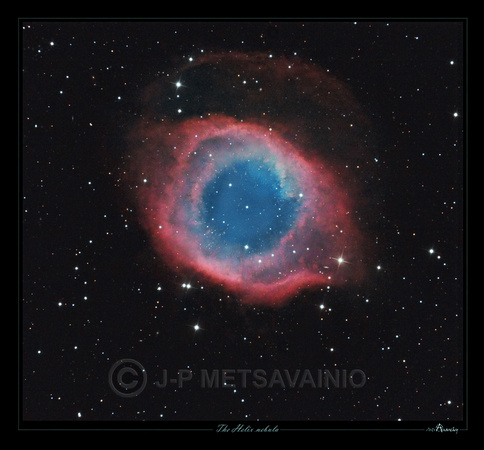Helix nebula
Litle by litle the image gets deeper when more exposures gets added.
Previous version here:
http://astroanarchy.blogspot.com/2010/06/start-of-new-imaging-project-helix.html
The Helix nebula, NGC 7293. Planetary nebula in constellation Aquarius about 700 light years from the Earth..
(The helix has been often referred to as the "Eye of Good",
I'll like to know, which one it's supposed to belong... least we know now He/She has very large Blue eye(s).)
This is a start for an imaging project, since the Helix has lowish surface brightness, it'll need a long integration time. Now there is just One hour used for the Luminance channel and 10 min./each RGB-channel.
I think, about Five to ten hours is needed to reveal dimmer outer parts of this Planetary nebula.
Later we'll shoot all the narrow band channels, H-a, O-III and S-II, too.
The telescope and technical information:
http://3.bp.blogspot.com/_9HcYqbvUc4s/S-b4XGoaKCI/AAAAAAAAEVg/lmCuJMbTT-c/s1600/NGTelescopeL.jpg
16" RCOS ja Apogee U9000 camera.
LRGB combo.
Luminance 9x600s., Dark and Flat calibrated.
Red 5x600s, Dark calibrated
Green 5x600s, Dark calibrated
Blue 5x600s, Dark calibrated
Raw data is shared with Petri Kehusmaa and J-P Metsavainio
Processing workflow:
Image acquisition, MaxiDL v4.xxx
Stacked and calibrated in CCDStack.
Deconvolution with a CCDSharp, 30 iterations
Levels, curves and color combine in PS CS3.


